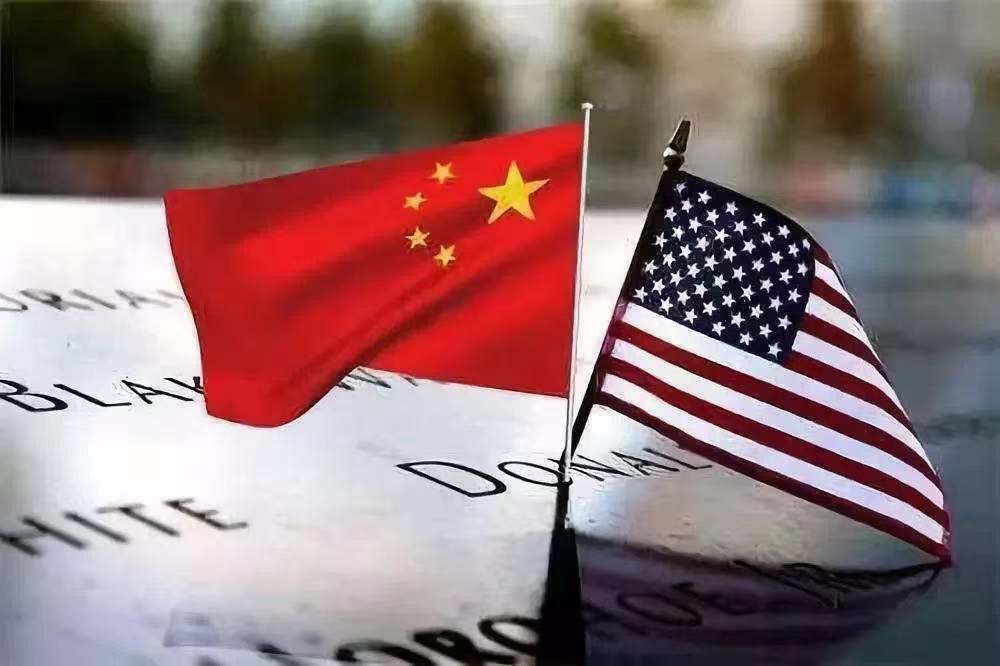As Julius Caesar’s army advanced towards Rome, the Senate ordered him not to take his army across Italy’s then northern border—the Rubicon River. On 10 January 49BC Caesar defied the order and crossed the Rubicon. The Senate considered this a declaration of civil war. The rest, as they say, is history. Today, crossing the Rubicon means metaphorically to pass a point of no return. Some say that US-China relations have crossed the Rubicon and that they will now inexorably spiral downward eventually resulting in kinetic conflict.

The picture is from Xinhuanet
Although war between China and the U.S. may not be inevitable, it is becoming increasingly likely. The two are on a fundamental collision course driven by competing ideologies, ambitions and visions of the ‘international order’. Although compromise and co-existence may still be possible, this would require either China to abandon some of its “core interests” or the U.S. to accommodate some of them. It seems that neither is inclined to do so. Both claim they do not want conflict. But despite rapidly deteriorating relations, they cannot agree on how to avoid it. The result is a geopolitical and naval game of ‘chicken’ centering on the South China Sea but with critical security implications for the region.
There is a stark contrast in national views. US President Joe Biden believes that the world is at a turning point in history. He has publicly identified what he considers a long term existential threat to democracy and thus Americans’ fundamental beliefs and way of life. He says autocracies—like China and Russia—are betting that their systems will out compete democracies in addressing the enormous and increasingly complex challenges of the 21st century. He said that they think that democracies—with their byzantine systems of checks and balances will not be able to function efficiently and effectively to meet these challenges—and that they can and will do so. In sum, they think that they can satisfy their populaces by providing continuity, stability, and predictability—and thus personal security—rather than Western-style liberal individual freedoms, resultant chaos and personal insecurity.
A good current example of democratic dysfunction in US foreign policy is a bitterly divided Congress that is blocking Biden’s nominations to complete his foreign policy team. Some experts say this is undermining the Biden administration’s ability to conduct foreign policy. This includes its effort to shift its diplomatic and military focus from Europe and the Middle East to China.
As Graham Allison has observed, “Washington urges other powers to accept the rule-based international order over which it presides. But through Chinese eyes, it looks like the Americans make the rules and others obey Washington’s commands”.
China’s President Xi Jinping has stated that China will not be “bullied, oppressed, or subjugated”, nor will it evolve in directions set by others. Even if China were to moderate its more egregious behavior as a temporary tactic, it seems that nothing will deter it from its goals of being respected as a nation and a people equal to the U.S. and Americans.
China’s Foreign Minister Wang Yi has laid out the specifics of China’s position. He reportedly told US Deputy Secretary of State Wendy Sherman in their 26 July meeting in Tianjin that China had three bottom lines—“the United States must not challenge or seek to subvert China’s model of governance; it must not interfere in China’s development; and it must not violate China’s sovereignty or harm its territorial integrity.” But the US continues to do all three.
China’s Vice Foreign Minister Xie Feng told Sherman that the Chinese–American relationship is “in a stalemate and faces serious difficulties because the U.S. treats China as an “imagined enemy”. Indeed, the China ‘threat’—real or imagined—now drives US foreign and military planning and policy towards it. The U.S. is applying ‘whole of government’ pressure on China, instituting sanctions because of what it considers unfair economic practices, its theft of intellectual property, its government-linked cyber hacking, its harsh treatment of minorities in Xinjiang, its political crackdown in Hong Kong and its bullying in the South China Sea. Most dangerous, the U.S. is stepping up diplomatic and military relations with Taiwan.
After his meeting with Sherman, Xie expressed China’s “strong dissatisfaction towards the wrong remarks and actions of the US” regarding the origins of Covid-19, Taiwan, Xinjiang, Hong Kong and the South China Sea. “The US side has sought China’s cooperation and support on climate change, the Iran nuclear issue and the North Korea nuclear issue. The US cannot expect cooperation on one hand and to hurt China’s interests on the other. This won’t work.”
This clash of world visions—driven by dueling ideologies—is now being backed by military shows of force. Indeed, China’s navy now poses a credible challenge to US military dominance in the region.
The US response is to build overlapping political and military coalitions of like-minded democracies to contain China—including in Asia—Japan, Australia, India and South Korea—and in Europe—the U.K., Germany and France. The maritime dimension of this coalition is currently coagulating.
Including China’s archenemy Japan in this coalition dramatically increases the chance of war. Already, Japan is approaching China’s redlines. Its 2021 defense White Paper has for the first time explicitly stated that Taiwan is important for Japan’s security. Voicing the national position, Japan’s State Minister for Defense said “We have to protect Taiwan as a democratic country”. Japan’s Deputy Prime Minister Taro Aso said that a Chinese invasion of Taiwan would threaten Japan’s survival so Japan and the U.S. must defend Taiwan together. Some Chinese analysts think that this reflects the rise of a pro-Taiwan independence faction in Japan’s government. China responded predictably, warning that “China does not allow any country to intervene in the Taiwan issue in any way”.
Not content with stirring just that pot, Japan has even urged Australia to join it in military exercises aimed at the ‘China Threat’ in the East China Sea. Moreover it has expanded the number of countries with which it conducts military exercises and has focused on building capacity in Southeast Asia to protect their maritime claims. https://thediplomat.com/2021/08/japans-military-role-in-the-indo-pacific/
What Japan’s leaders and much of its populace don’t seem to ‘get’ is the breadth and depth of Chinese bitterness regarding the Japanese army’s treatment of Chinese during its occupation of China and Southeast Asia. To the victims it seemed that the Japanese considered them inferior—even subhuman. The visceral hatred this generates is being reawakened by such statements and actions. This perception is not helped by the image on the cover of the latest defense White Paper—a mounted samurai—that evokes memories of Japan’s militarism.
There are three issue clusters where unilateral actions by either side could trigger war—Taiwan, the East China Sea and the South China Sea. The first two are the most dangerous. But precisely because they are most dangerous and the red lines are clear, China, Japan and the U.S. will likely avoid kinetic conflict there—for the time being.
This brings us to the South China Sea where the red lines are more ambiguous—but just as real. The current situation is tense. Hu Xijin, editor in chief of the Global Times—which often reflects government views—has warned “don’t overdo it in the South China Sea.”
There are indeed dangerous dynamics at work there. The South China Sea is at the crux of the US-China strategic contest for regional dominance. For China, it provides relative ‘sanctuary’ for its retaliatory strike nuclear submarines based in Yulin on Hainan. These submarines are its insurance against a first strike—something the U.S.—unlike China—has not disavowed. This conundrum underlies the red lines in the South China Sea.
There are other factors at play as well. For China, whose body politic has become increasingly nationalistic, any national loss of face and resultant loss of respect for leadership could trigger a crossed ‘red line’ response. This might include a US military confrontation that forces a public climb down by China’s PLAN.
Under US President Donald J. Trump, US-China relations overall and in the South China Sea in particular rapidly deteriorated. Both escalated the situation with belligerent rhetoric and military posturing and they became locked in a dilemma driven by mutual distrust. Each claimed to be responding to the other and neither wanted to make the first move to de-escalate. A clash became a distinct possibility and both militaries began preparing for the worst.
The Biden administration has continued and even intensified this military posturing. Indeed, the U.S. approach is to “meet China’s greater assertiveness with a more assertive use of force of its own.”
On the eve of his visit to Southeast Asia, US Secretary of Defense Lloyd Austin said he intended to emphasize a commitment to freedom of the seas and push back on “unhelpful and unfounded claims” made by China in the South China Sea.
He said he would be “working closely with our partners about how we’re updating and modernizing our capabilities and their own capabilities to work together to tackle some changing forms of aggression and coercion [like the use of maritime militia] and how we’ll work hand in hand to pursue our new vision of integrated deterrence.” He also said that the U.S. is working with Taiwan to enhance its own capabilities to deter threats and coercion. To China, this particular combination of provocations is about as ‘in your face’ as you can get. It is essentially throwing down the gauntlet. China is bound to respond in like manner.
The late Lee Kuan Yew hit the nail on the head when he doubted that the U.S. would be able to peacefully adapt to a rising China. “For America to be displaced—in the western Pacific by an Asian people long despised and dismissed with contempt—is emotionally very difficult to accept. The sense of cultural supremacy of the Americans will make the adjustment most difficult”.
US Republican Senator Marco Rubio has confirmed this analyses. Regarding the challenge China presents to America and Americans, he warns “If we fail, it is a century of humiliation that awaits us”. To him and like-minded American politicians, the loss of American dominance in Asia would be a failure of liberal democracy. Therefore he supposedly favors conflict sooner rather than later when China is stronger.
What makes the situation ever more dangerous is that the stronger China’s military becomes, the more China thinks the U.S. won’t fight. This is feeding China’s ever toughening response to what it considers US military provocations, especially in the South China Sea. Just as worrying is Allison’s conclusion that a hegemonic power like the U.S. will likely become ever more confrontational and violent as it struggles to retain its dominance.
US-China relations may not yet have crossed the Rubicon. But if not, they are certainly rapidly approaching it.

